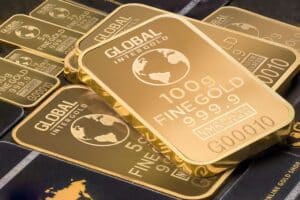Precious metals to diversify your investment portfolio

Photo by Michael Steinberg
According to experts, the global economy is weakening and on track to head towards a recession caused by several events such as the Russia-Ukraine war, high inflation, and rising energy prices, among others. Global stocks are also falling due to concerns of higher interest rates and the health of economies. If you have investments in stocks, you might want to rethink how to hedge your bets and put your money into something that will withstand shocks and pressures. Metal investments can offer resilience when it comes to unfavorable economic climates.
Understanding metals
Before investing in metals, it is important to familiarize yourself with how the trade works. For example, understand that there are different pricing levels of commodities that you want to purchase. The spot price of the London Bullion Market Association (LBMA) is the average of multiple global markets, while the retail price is a price set by dealers based on production costs and the profit margins. Hence, you must know if it makes sense to go for the spot or retail price when investing in metals.
Several options also exist should you delve in precious metals. Commodity exchange traded funds (ETFs) are practical means of buying and selling gold, platinum or silver, but you do not have access to the physical commodity, nor will you receive a delivery of a gold bar or silver coin. Stock and mutual funds are other ways to invest money in precious metals. If you can keep coins and bars in a safe place, bullion is an alternative. It may be the only option available to those who are expecting the worst. On the other hand, it is illiquid or not easily converted to cash and inconvenient to hold.
Why invest in metals?
That said, there are favorable arguments for investing in metals. Precious metals, for example, can diversify your portfolio hedging your investments against inflation. Although gold is the most common precious metal investment, you can also consider silver, palladium, and platinum. Each type of metal has, of course, different risks and opportunities. The price of gold, however, is less affected by supply and demand. Keep in mind though that the demand to keep the metal is driven by several factors such as financial concerns, inflation, and war or political crises. It is sought after as a safe store of value and is seen as an asset that maintains its worth. In short, it has an intrinsic value and cannot be inflated. During wars or conflicts, it can be traded for many things including food, shelter, or safe passage.
From another angle, investments in precious metals, no matter how low, can reduce your portfolio risks. However, keep in mind that every investment carries risks. Prices for metals can drop due to changes in supply and demand and geopolitical issues. But, during economic uncertainties, sellers gains, because prices tend to go up.
Precious metals can serve as a hedge against inflation, diversify a portfolio, carry no credit risks, and offer a high level of liquidity. Betting on metals can reduce the risks of your investments during times of economic difficulties.

